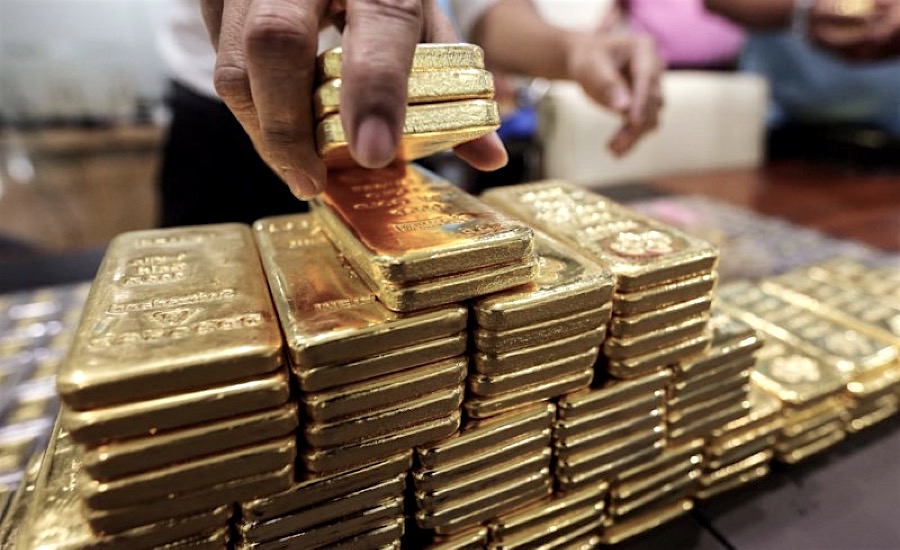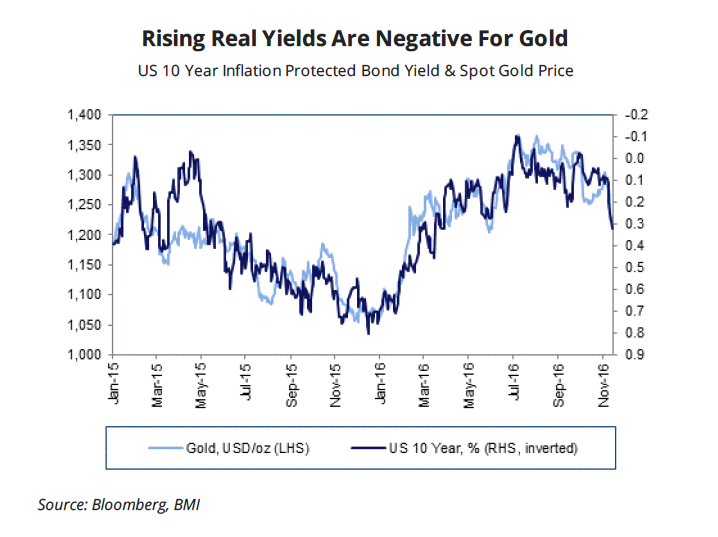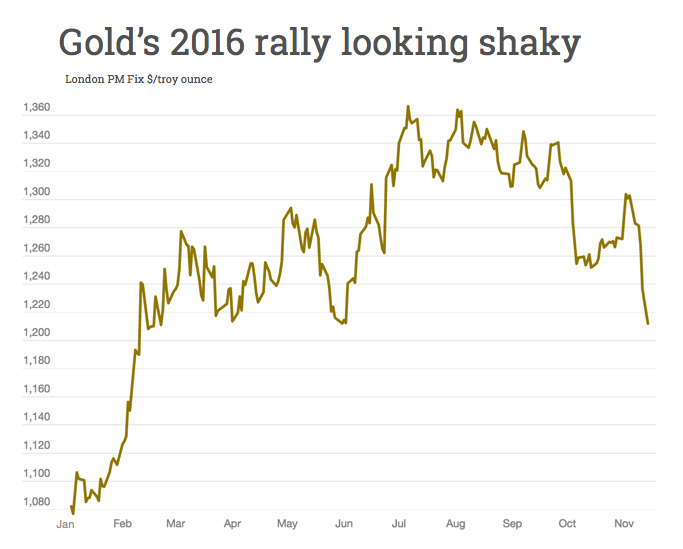
Gold prices rose slightly Wednesday, but fell shortly after and they continue to be far from the highs they hit right after Donald Trump won the US presidential election last week.
The metal is actually hovering close to a six-month low of around $1,230 an ounce as better economic data made a December rate increase by the US Fed more likely. The drop was also fuelled by a rise of the dollar, which climbed to a fresh 14-year high against a currency basket.
According to comments made by St. Louis Federal Reserve President James Bullard “a single policy rate increase, possibly in December, may be sufficient to move monetary policy to a neutral setting,” the WSJ.com reports.
He also said the short-term outlook for monetary policy is unchanged following Donald Trump’s win in the White House race.
 Gold for December delivery was last up 0.3% at $1,228.50 an ounce on the Comex division of the New York Mercantile Exchange. Gold is now down more than $103 an ounce after an initial surge on Tuesday last week, as results showed a likely Trump victory.
Gold for December delivery was last up 0.3% at $1,228.50 an ounce on the Comex division of the New York Mercantile Exchange. Gold is now down more than $103 an ounce after an initial surge on Tuesday last week, as results showed a likely Trump victory.
BMI Research cut its average-price forecast for 2017 to $1,300 an ounce from the previous $1,400, adding it sees limited room for a rebound over the coming weeks.
Gold bulls point to likely inflation arising from deficit spending by a Trump administration, burnishing gold status as a hedge against inflation and geopolitical uncertainty boosting gold’s allure as safe haven asset.
Others are not so sure. On Wednesday, BMI Research cut its average-price forecast for 2017 to $1,300 an ounce from the previous $1,400, adding it sees limited room for a rebound over the coming weeks.
Long-term, however, the analysts see some upside risk for prices. The main one, they say, is that the US Fed falls behind the curve on inflation, possibly resulting from political pressure from Washington to maintain easy monetary policy.
“This risk is most relevant in 2018 and beyond given that Trump has stated that he intends to replace current Fed Chairperson Janet Yellen at the end of her term in February 2018,” BMI says.
Trump has shown interventionist tendencies that could prevent a tightening of monetary policy despite fiscal expansion and rising inflationary pressures, the researchers note.
The major downside risk BMI sees for its price forecasts is that fiscal stimulus measures in the US pass swiftly through Congress and the resulting upswing in economic growth encourages to Fed to drastically accelerate interest rate hikes.

Comments
Jan Jee
haha you geniouses, very shaky.